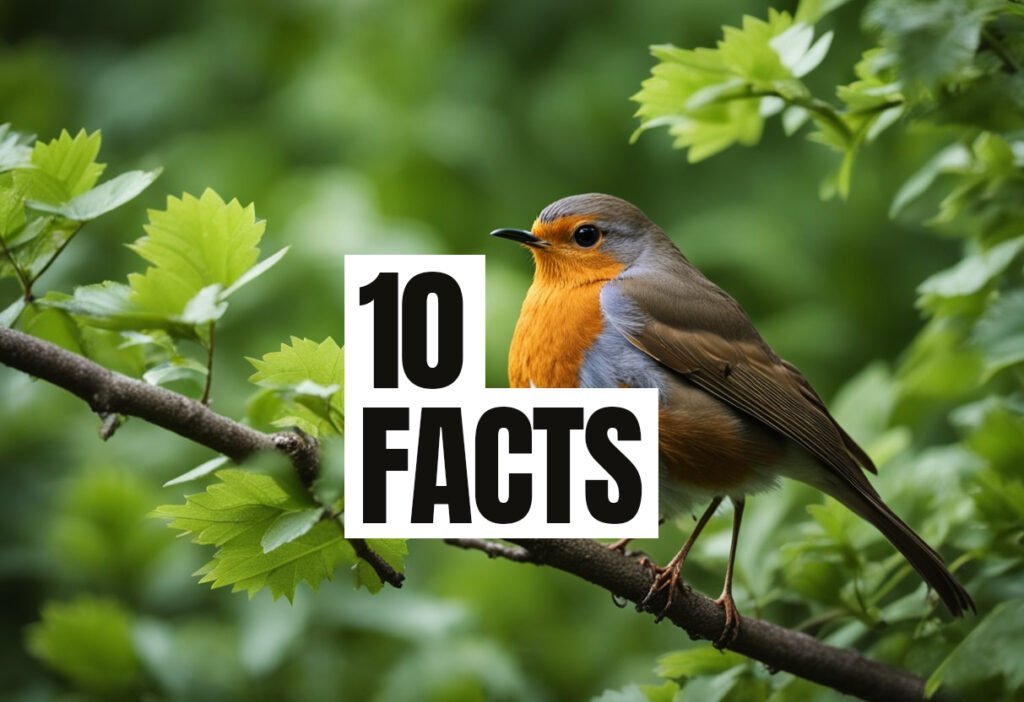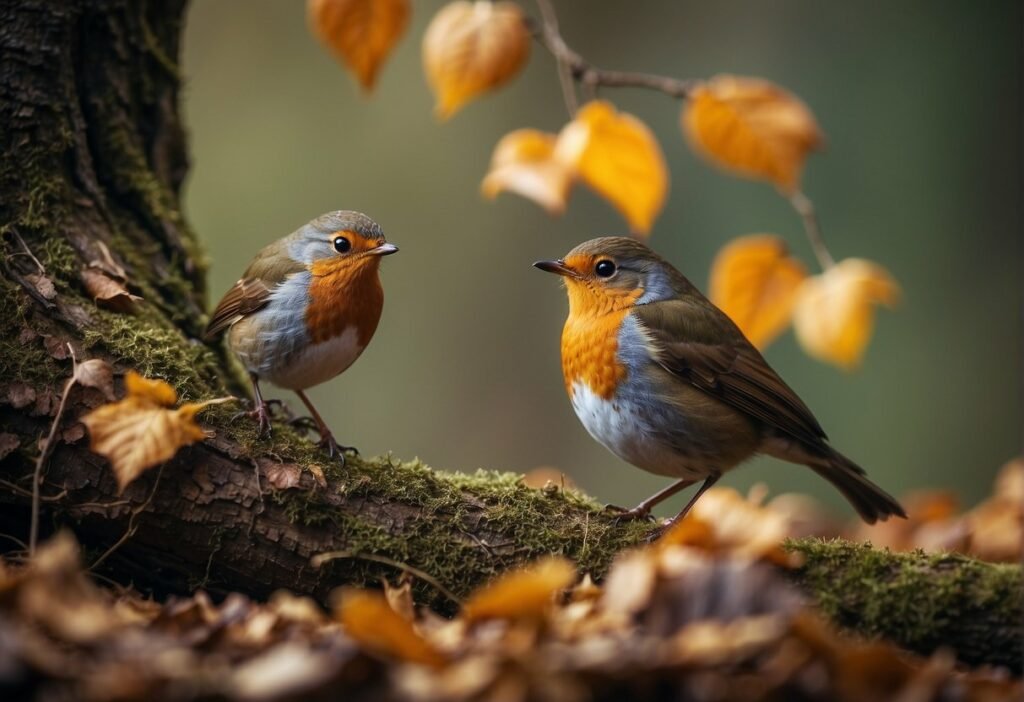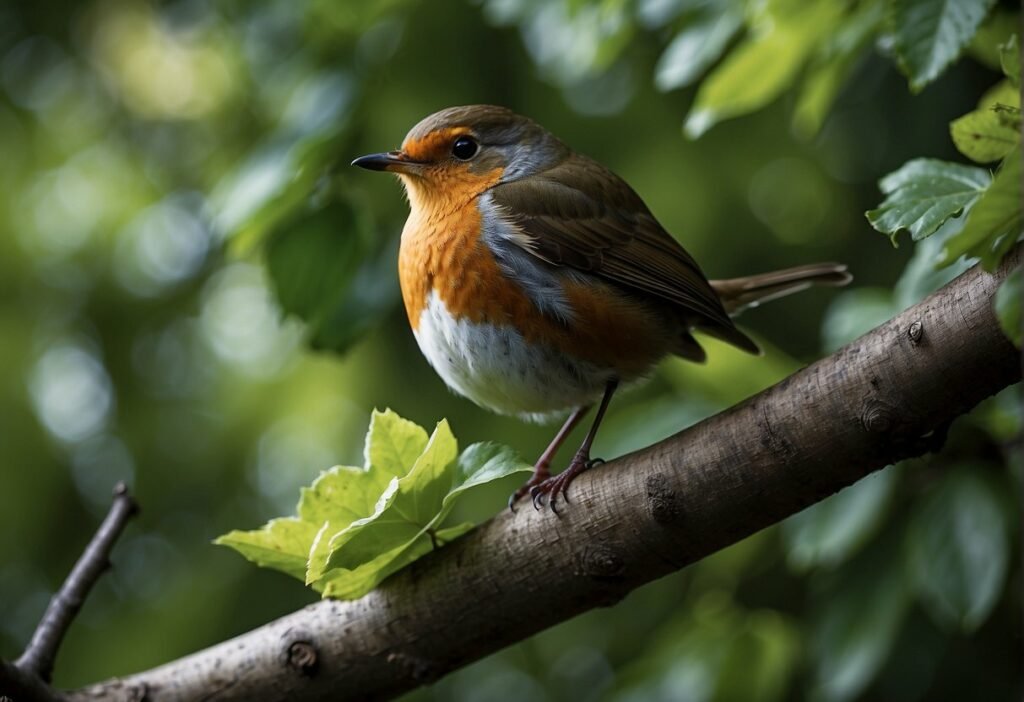Robins are one of the most beloved birds in North America, known for their distinctive red breast and sweet melodies. As such, many bird enthusiasts wonder about the breeding habits of these feathered friends. So, how often do robins reproduce?

The answer to this question depends on a few factors. First, robins are migratory birds, meaning that they only breed during certain times of the year. In North America, robins typically breed from March through July, with peak breeding activity occurring in April and May. During this time, robins will build nests and lay eggs, with the female typically laying one to two clutches of eggs per year.
The number of eggs in each clutch can vary, but typically ranges from three to five. The eggs take about two weeks to hatch, and the young birds will stay in the nest for another two weeks before fledging and leaving the nest. Overall, robins are fairly prolific breeders, with many pairs successfully raising multiple broods each year.
Reproductive Biology of Robins
Robins are a common backyard bird that are known for their beautiful song and bright orange-red breast. In addition to their striking appearance, robins are also known for their reproductive biology. In this section, we will explore the mating and nesting behaviors, egg laying and incubation, and raising of the young of robins.
Mating and Nesting Behaviors
During the breeding season, male robins establish a territory and begin to court females. The courtship display of male robins involves puffing up their feathers, hopping around, and singing. Once a female has chosen a mate, the pair will begin to build a nest.
Robins build their nests out of a variety of materials, including grass, twigs, mud, leaves, and other plant material. The nest is typically built in a tree or shrub, but can also be found in planters, eaves, ledges, or other structures. The foundation of the nest is made of twigs and branches, while the inside is lined with softer materials such as grass, leaves, and mud.
Egg Laying and Incubation
Once the nest is complete, the female robin will lay a clutch of eggs. The clutch size can range from 3-5 eggs, and the eggs are typically blue with brown spots. The female robin will incubate the eggs for approximately 12-14 days, during which time the male will bring her food.
Raising the Young
After the eggs hatch, the mother robin will continue to incubate the nestlings while the father brings food. The nestlings will remain in the nest for approximately 14-16 days before fledging. During this time, they will grow rapidly and develop their body feathers.
Once the young robins fledge, they become independent and begin to feed themselves. They will continue to grow and develop into juvenile birds over the next few weeks. During this time, they will primarily feed on earthworms and other insects.
While robins are a common backyard bird, they are still vulnerable to predators such as cats and hawks. However, with their strong nesting instincts and protective behavior, robins are able to successfully raise their young and continue to thrive in urban and suburban environments.
Habitat and Environmental Factors
Nesting Sites and Predation
Robins are known for building their nests in a variety of locations, including on top of sheds, in kettles, and in trees. They prefer to build their nests in deciduous trees that provide ample cover and protection from predators. The nests are typically made of grass, leaves, twigs, and mud. The nesting material is woven together to create a sturdy structure that can withstand harsh weather conditions.
However, despite their best efforts, robins are still vulnerable to predators such as squirrels, raccoons, and snakes. These predators can easily climb trees and raid nests, stealing eggs or young birds. To combat this, robins will often build multiple nests and choose the most secure location to lay their eggs.
Seasonal Patterns and Reproduction
Robins are migratory birds that typically breed during the spring and summer months. During the breeding season, males will establish territories and defend them from other males. They will also sing songs to attract females and establish their dominance.
Once a male has attracted a female, they will begin building a nest together. The female will lay one to six blue eggs, which will hatch after approximately two weeks. The young birds will stay in the nest for another two weeks before fledging and leaving the nest.
Robins typically have one to two broods per breeding season, with each brood consisting of one to six eggs. However, environmental factors such as food availability and weather conditions can impact their reproductive success. In the UK, for example, robins have been known to breed in the winter months if food is readily available.
Overall, robins are adaptable birds that can thrive in a variety of habitats, including lawns and gardens. By understanding their nesting habits and reproductive patterns, we can better appreciate these songbirds and help protect their habitats.
Frequently Asked Questions
What is the typical lifespan of a robin in the wild?
Robins in the wild typically live for about two years. However, some individuals have been known to live up to six years.
How many eggs are commonly laid by a robin in a single clutch?
Robins commonly lay between three to five eggs in a single clutch. However, clutches of up to seven eggs have been observed.
During what months are robins known to lay their eggs?
Robins in North America typically start laying their eggs in March or April, depending on the region. However, in more southern regions, they may start as early as February.
How long does it take for robin eggs to hatch and the fledglings to leave the nest?
Robin eggs typically take about two weeks to hatch. The fledglings then spend about two weeks in the nest before they are ready to leave.
Do robins engage in monogamous relationships, or do they have multiple mates?
Robins are known to engage in monogamous relationships during the breeding season. However, some males may also mate with multiple females.
In a given year, how often can robins reproduce?
Robins can have up to three clutches in a single breeding season, depending on the availability of food and other resources. However, two clutches are more common.




